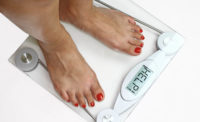It may seem too simple, but keeping your hands clean with soap and water is one of the most important things you can do to stay healthy. That’s according to the Centers for Disease Control and Prevention (CDC), which has issued a reminder about the importance of washing hands – and backed it up with a toolkit to encourage handwashing within your community.
That and other resources are part of the CDC’s Life is Better with Clean Hands campaign that’s designed to motivate adults to make clean hands part of their daily lives.
Why spread the word about something so basic?
The CDC says educating people about handwashing:
- Reduces the number of people who get sick with diarrhea by 23-40% 2, 3, 6
- Reduces diarrheal illness in people with weakened immune systems by 58% 4
- Reduces respiratory illnesses, like colds, in the general population by 16-21% 3, 5
- Reduces absenteeism due to gastrointestinal illness in schoolchildren by 29-57% 7
| “Handwashing is a win for everyone, except the germs.” |
Handwashing with soap removes germs from hands. This helps prevent infections because:
- People frequently touch their eyes, nose, and mouth without even realizing it. Germs can get into the body through the eyes, nose and mouth and make us sick.
- Germs from unwashed hands can get into foods and drinks while people prepare or consume them. Germs can multiply in some types of foods or drinks, under certain conditions, and make people sick.
- Germs from unwashed hands can be transferred to other objects, like handrails, table tops, or toys, and then transferred to another person’s hands.
- Removing germs through handwashing therefore helps prevent diarrhea and respiratory infections and may even help prevent skin and eye infections.
How to do it right
Handwashing involves five simple and effective steps (Wet, Lather, Scrub, Rinse, Dry). Regular handwashing, particularly before and after certain activities, is one of the best ways to remove germs, avoid getting sick, and prevent the spread of germs to others. It’s quick, it’s simple, and it can keep us all from getting sick.
“Handwashing is a win for everyone, except the germs,” according to the CDC.
References
- Franks AH, Harmsen HJM, Raangs GC, Jansen GJ, Schut F, Welling GW. Variations of bacterial populations in human feces measured by fluorescent in situ hybridization with group-specific 16S rRNA-targeted oligonucleotide probes.external icon Appl Environ Microbiol. 1998;64(9):3336-3345.
- Ejemot RI, Ehiri JE, Meremikwu MM, Critchley JA. Hand washing for preventing diarrhoea.external icon Cochrane Database Syst Rev. 2008;1:CD004265.
- Aiello AE, Coulborn RM, Perez V, Larson EL. Effect of hand hygiene on infectious disease risk in the community setting: a meta-analysis.external icon Am J Public Health. 2008;98(8):1372-81.
- Huang DB, Zhou J. Effect of intensive handwashing in the prevention of diarrhoeal illness among patients with AIDS: a randomized controlled study.external icon J Med Microbiol. 2007;56(5):659-63.
- Rabie T and Curtis V. Handwashing and risk of respiratory infections: a quantitative systematic review.external icon Trop Med Int Health. 2006 Mar;11(3):258-67.
- Freeman MC, Stocks ME, Cumming O, Jeandron A, Higgins JPT, Wolf J et al. Hygiene and health: Systematic review of handwashing practices worldwide and update of health effects.external icon Trop Med Int Heal 2014; 19: 906–916.
- Wang Z, Lapinski M, Quilliam E, Jaykus LA, Fraser A. The effect of hand-hygiene interventions on infectious disease-associated absenteeism in elementary schools: A systematic literature review.external icon Am J Infect Control 2017; 45: 682–689.
- Liu L, Johnson HL, Cousens S, Perin J, Scott S, Lawn JE, Rudan I, Campbell H, Cibulskis R, Li M, Mathers C, Black RE; Child Health Epidemiology Reference Group of WHO and UNICEF. Global, regional, and national causes of child mortality: an updated systematic analysis for 2010 with time trends since 2000.external icon Lancet. 2012 Jun 9;379(9832):2151-61.
- Burton M, Cobb E, Donachie P, Judah G, Curtis V, Schmidt WP. The effect of handwashing with water or soap on bacterial contamination of hands.external icon Int J Environ Res Public Health. 2011 Jan;8(1):97-104.
- Azor-Martínez E, Cobos-Carrascosa E, Gimenez-Sanchez F, Martínez-López JM, Garrido-Fernández P, Santisteban-Martínez J, Seijas-Vazquez ML, Campos-Fernandez MA, Bonillo-Perales A. Effectiveness of a multifactorial handwashing program to reduce school absenteeism due to acute gastroenteritis.external icon Pediatr Infect Dis J. 2013 Oct 3.
- Lau CH, Springston EE, Sohn MW, Mason I, Gadola E, Damitz M, Gupta RS. Hand hygiene instruction decreases illness-related absenteeism in elementary schools: a prospective cohort study.external icon BMC Pediatr. 2012;12:52.
- Master D, Hess Longe SH, Dickson H. Scheduled hand washing in an elementary school population.external icon Fam Med. 1997;29(5):336-9.
- Bowen A, Agboatwalla M, Luby S, Tobery T, Ayers T, Hoekstra RM. Association between intensive handwashing promotion and child development in Karachi, Pakistan: a cluster randomized controlled trial.external icon Arch Pediatr Adolesc Med. 2012 Nov;166(11):1037-44.
- Hogerzeil H. Promoting rational prescribing: An international perspective. pdf icon[PDF – 6 pages]external icon Br J Clin Pharmacol. 1995;39:1-6.






